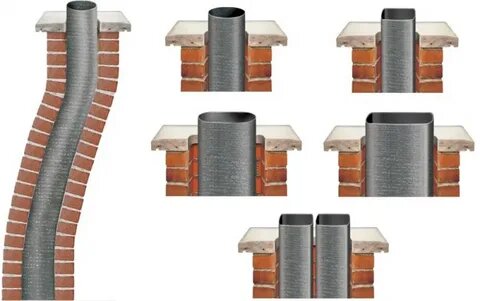Introduction
When people hear “chimney liner,” they often picture an expensive, complicated project that eats up the home repair budget. The truth is, not every chimney liner solution will break the bank. If you understand your options and what actually matters for your home’s needs, you can find a choice that is both safe and wallet-friendly. And yes, it’s possible to strike that balance without feeling like you’re cutting corners. I’ve seen it first-hand while helping homeowners choose what works best for them—welcome to the world of practical decision-making with Colorado Springs Chimney Liner.
1.Key Features That Matter Most
If you’re trying to keep costs under control, the trick is to focus on what’s necessary rather than being dazzled by every fancy upgrade out there. A budget-friendly liner doesn’t mean a low-quality one—it means you’re matching the product to your actual needs.
-
Material choice – Stainless steel is the go-to for durability and safety, but clay liners can be more affordable if your chimney structure supports them.
-
Sizing accuracy – A liner that’s the right fit saves you money in installation and improves performance.
-
Insulation – Optional in some cases, but in colder climates, it can make a big difference in efficiency.
Table: Comparing Common Chimney Liner Options
Liner Type Average Lifespan Pros Cons Relative Cost Clay Tile 50+ years Low material cost, durable Hard to install in older chimneys $ Stainless Steel 20–25 years Corrosion resistant, versatile Higher upfront cost $$–$$$ Aluminum 15–20 years Affordable, light weight Not suitable for all fuel types $–$$ Cast-in-Place 30–50 years Adds structural support Labor-intensive, higher cost $$$
2.Safety Without Overspending
Your chimney liner is not just about venting smoke it’s about protecting your home from fire hazards, gas leaks, and heat transfer to combustible materials. Even when sticking to a tighter budget, safety should be non-negotiable. Here’s the trick: sometimes the most cost-effective safety solution isn’t the cheapest material but rather the best installation. I’ve seen affordable liners work perfectly for decades simply because they were installed correctly and maintained regularly. The opposite is true too expensive liners can fail early if they’re poorly fitted.
“A safe chimney isn’t built from the most expensive materials; it’s built from the right ones, installed the right way.”
If you’re unsure, ask your installer to show you pictures or videos of the liner after installation. That transparency builds trust and keeps you informed without needing a contractor’s handbook.
3.Cost Tips That Actually Work
It’s tempting to shop purely based on price, but a “budget-friendly” purchase can quickly turn into an expensive headache if it needs replacing too soon.
Cost-saving ideas that don’t cut quality:
-
Match liner type to your heating source – For example, don’t use aluminum for wood-burning fireplaces.
-
Bundle with other chimney work – If you’re already getting a sweep or cap replacement, combining jobs can reduce labor costs.
-
Seasonal discounts – Late spring and early summer are often slow seasons for chimney services—great for negotiating better rates.
Remember, it’s about total cost over time, not just the initial bill. A liner that costs a little more upfront but lasts 10 years longer will almost always be the better value.
4.Emergency Service—When Time Is the Real Cost
Sometimes you don’t get the luxury of shopping around—your chimney liner fails, and cold weather is coming fast. In these situations, the budget conversation changes because time becomes a factor. Emergency services will almost always cost more, but you can still make budget-conscious choices:
-
Ask if there’s a temporary solution to get you through the season before a full replacement.
-
If using emergency installation, choose a liner that’s widely available locally to avoid shipping delays and costs.
-
Request an itemized bill to see where the urgency is adding cost—you might be able to trim extras.
The good news is that most chimney issues don’t appear overnight; regular inspections can help you avoid the emergency route entirely.
FAQs
Q1: What’s the cheapest type of chimney liner?
A: Clay tile liners are generally the least expensive material-wise, but installation can be tricky in older chimneys.
Q2: Can I install a chimney liner myself to save money?
A: While it’s technically possible, improper installation can lead to dangerous conditions and void warranties. Professional installation is highly recommended.
Q3: How can I make a stainless steel liner more affordable?
A: Choose the right grade for your fuel type and look for seasonal or bundle discounts from local installers.
Q4: Is it worth replacing a damaged liner before winter?
A: Yes—waiting can increase heating costs and create safety risks. Even a temporary fix is better than ignoring the problem.
Q5: How often should I inspect my chimney liner?
A: At least once a year, preferably before heavy seasonal use, to catch issues early and extend lifespan.
Conclusion
Finding the most budget-friendly chimney liner option isn’t about picking the cheapest product—it’s about finding the smartest fit for your home, fuel type, and local climate. By focusing on essential features, prioritizing safety, and making strategic choices about timing and installation, you can keep your chimney efficient and your wallet intact. Whether you’re planning ahead or dealing with an urgent repair, understanding your options makes the process less stressful and far more affordable. In the end, the goal is simple: a safe, long-lasting chimney that doesn’t drain your savings—something that’s entirely possible with the right approach and the right partner, like Colorado Springs Chimney Liner.
Read More: Colorado Springs Chimney Sweep





